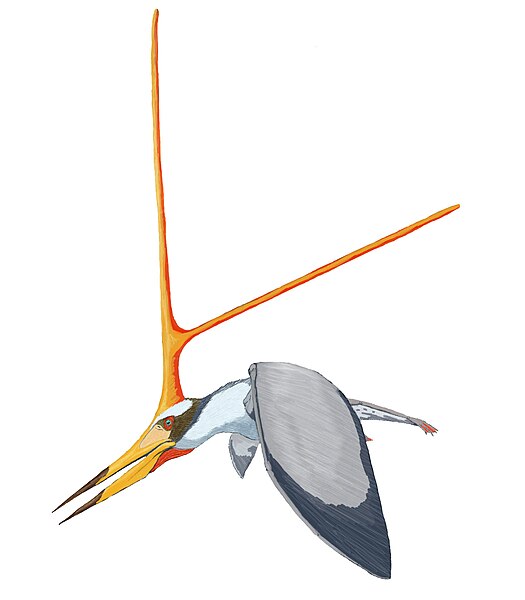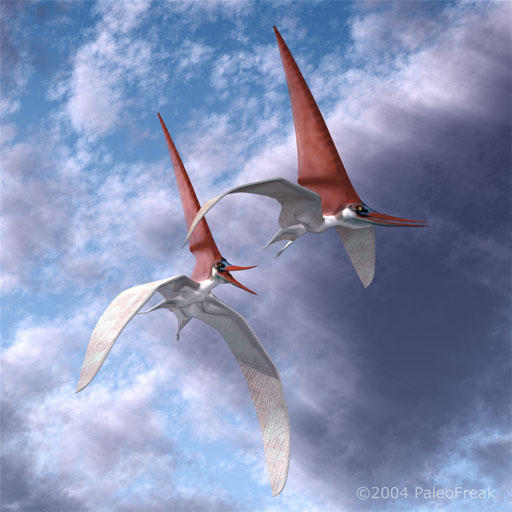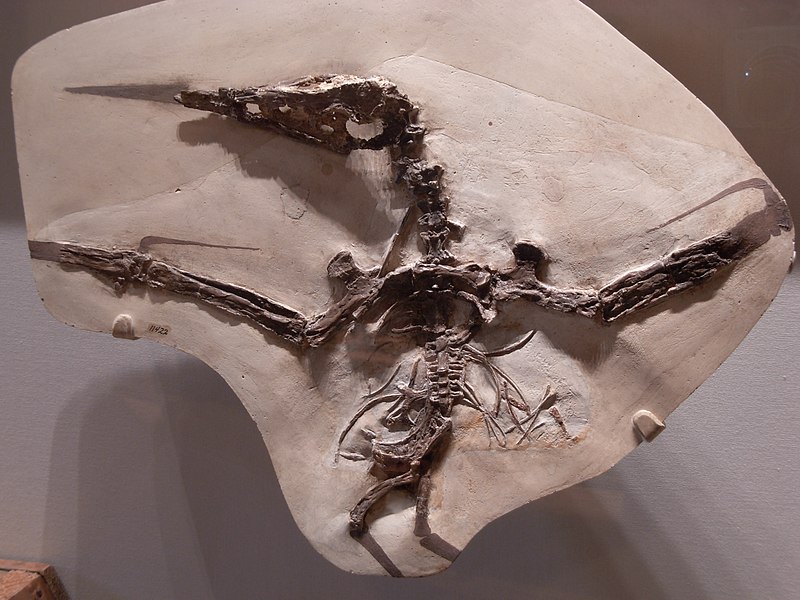[Recent Entries][Archive][Friends][User Info]
| October 8th, 2014 | ||||||||||||||||||||||||||||||||||||||||||||||||||||||||||||||||||||||||||||||||||||||||||||||||||||||||||||||||||||||||||||||||||||||||||||||||||||||||||||||
|---|---|---|---|---|---|---|---|---|---|---|---|---|---|---|---|---|---|---|---|---|---|---|---|---|---|---|---|---|---|---|---|---|---|---|---|---|---|---|---|---|---|---|---|---|---|---|---|---|---|---|---|---|---|---|---|---|---|---|---|---|---|---|---|---|---|---|---|---|---|---|---|---|---|---|---|---|---|---|---|---|---|---|---|---|---|---|---|---|---|---|---|---|---|---|---|---|---|---|---|---|---|---|---|---|---|---|---|---|---|---|---|---|---|---|---|---|---|---|---|---|---|---|---|---|---|---|---|---|---|---|---|---|---|---|---|---|---|---|---|---|---|---|---|---|---|---|---|---|---|---|---|---|---|---|---|---|---|---|
| 02:31 pm [industrialterro] [Link] |
Nyctosaurus Nyctosaurus is a genus of pterodactyloid pterosaur, the remains of which have been found in the Niobrara Formation of the mid-western United States, which, during the late Cretaceous Period, was covered in an extensive shallow sea. The genus Nyctosaurus has had numerous species referred to it, though how many of these may actually be valid requires further study. At least one species possessed an extraordinarily large antler-like cranial crest. Nyctosaurus was similar in anatomy to its close relative and contemporary, Pteranodon. It had relatively long wings, similar in shape to modern seabirds. However, it was smaller overall than Pteranodon, with an adult wingspan of 2 meters (6.6 ft) and a maximum weight of about 1.86 kg. The overall body length was 37 cm. Some specimens preserve a distinctive crest, at least 55 cm tall in old adults, relatively gigantic compared to the rest of the body and over three times the length of the head. The crest is composed of two long, grooved spars, one pointed upward and the other backward, arising from a common base projecting up and back from the back of the skull. The two spars were nearly equal in length, and both were nearly as long or longer than the total length of the body. The upward-pointing crest spar was at least 42 cm long (1.3 ft) and the backward-pointing spar was at least 32 cm long (1 ft). The jaws of Nyctosaurus were long and extremely pointed. The jaw tips were thin and needle sharp, and are often broken off in fossil specimens, giving the appearance that one jaw is longer than the other, though in life they were probably equal in length. Nyctosaurus is the only pterosaur to have lost its clawed "fingers", with the exception of the wing finger (of which however the fourth phalanx was lost), which is likely to have impaired its movement on the ground, leading scientists to conjecture that it spent almost all of its time on the wing and rarely landed. In particular, the lack of claws with which to grip surfaces would have made climbing or clinging to cliffs and tree trunks impossible for Nyctosaurus. Nyctosaurus, like its relative Pteranodon, appears to have grown very rapidly after hatching. Fully adult specimens are no larger than some immature specimens such as P 25026, indicating that Nyctosaurus went from hatching to adult size (with wingspans of 2 m or more) in under a year. Some sub-adult specimens have been preserved with their skulls in nearly pristine condition, and lack any trace of a head crest, indicating that the distinctively large crest only began to develop after the first year of life. The crest may have continued to grow more elaborate as the animal aged, though no studies have examined the age of the fully adult, large-crested specimens. These individuals may have been 5 or even 10 years old at the time of their deaths. Only five relatively complete Nyctosaurus skulls have been found. Of those, one is juvenile and does not possess a crest (specimen FMNH P 25026), and two are more mature and may show signs of having had a crest but are too badly crushed to say for sure (FHSM 2148 and CM 11422). Two specimens (KJ1 and KJ2) described in 2003, however, preserved an enormous double-pronged crest. A few scientists had initially hypothesized that this crest, which resembles an enormous antler, may have supported a skin "headsail" used for stability in flight. While there is no fossil evidence for such a sail, studies have shown that a membranous attachment to the bony crest would have imparted aerodynamic advantages. However, in the actual description of the fossils, paleontologist Christopher Bennett argued against the possibility of a membrane or soft tissue extension to the crest. Bennett noted that the edges of each prong were smooth and rounded, and showed no evidence for any soft-tissue attachment points. He also compared Nyctosaurus with large-crested tapejarids, which do preserve soft tissue extensions supported by prongs, and showed that in those species, the attachment points were obvious, with jagged edges where the transition from bone to soft tissue occurred. Bennett concluded that the crest was most likely used solely for display, citing similar structures in modern animals. The 2009 study by Xing and colleagues testing the aerodynamics of the giant crest with a "headsail" also tested the aerodynamics of the same crest with no sail, and found that it added no significant negative factors, so a crest with no headsail would not have hindered normal flight. It is more likely that the crest acted mainly for display, and that any aerodynamic effects it may have had were secondary. Bennett also argued that the crest was probably not a sexually dimorphic character, as in most crested pterosaurs, including the related Pteranodon, both sexes are crested and it is only the size and shape of the crest that differs. The apparently non-crested Nyctosaurus specimens therefore probably came from sub-adults. Sankar Chatterjee and R.J. Templin used estimates based on complete Nyctosaurus specimens to determine weight and total wing area, and to calculate its total wing loading. They also estimated its total available flight power based on estimated musculature. Using these calculations, they estimated the cruising speed of Nyctosaurus gracilis as 9.6 meters/second (34.5 kilometers/hour or 21.4 miles/hour). All known Nyctosaurus fossils come from the Smokey Hills Chalk of Kansas, part of the Niobrara Formation. Specifically, they are found only within a narrow zone characterised by the abundance of ammonite fossils belonging to the species Spinaptychus sternbergi. These limestone deposits were laid down during a marine regression of the Western Interior Seaway that lasted between 85 and 84.5 million years ago. Therefore, Nyctosaurus was a relatively short-lived species, unlike its relative Pteranodon, which is found throughout almost all of the Niobrara layers into the overlying Pierre Shale Formation, and existed between 88 and 80.5 million years ago. The ecosystem preserved in this zone was unique in its abundance of vertebrate life. Nyctosaurus shared the sky with the bird Ichthyornis and with Pteranodon longiceps, though the second Niobrara Pteranodon species, P. sternbergi, had disappeared from the fossil record by this point. In the waters of the Western Interior Seaway below swam mosasaurs (Clidastes, Ectenosaurus and Tylosaurus), the flightless diving bird Parahesperornis, and a wide variety of fish, including swordfish-like Protosphyraena, the predatory Xiphactinus and the shark Cretolamna. The first Nyctosaurus fossils were described in 1876 by Othniel Charles Marsh, based on fragmentary material, holotype YPM 1178, from the Smoky Hill River site in Kansas. Marsh referred the specimen to a species of his new genus Pteranodon, as Pteranodon gracilis. Later that year, Marsh reclassified the species in its own genus, which he named Nyctosaurus, meaning "night lizard" or "bat lizard", in reference to the wing structure somewhat paralleling those of bats. In 1881, Marsh incorrectly assumed the name was preoccupied and changed it into Nyctodactylus, which thus is now a junior synonym. In 1902,Samuel Wendell Williston described the most complete skeleton then known (P 25026) discovered in 1901 by H. T. Martin. In 1903, Williston named a second species, N. leptodactylus, but this is today considered identical to N. gracilis. In 1953, Llewellyn Ivor Price named a partial humerus, DGM 238-R found in Brazil, N. lamegoi; the specific name honours the geologist Alberto Ribeiro Lamego. This species has an estimated wingspan of four metres; it is today generally considered to be a form different from Nyctosaurus, but has not yet been assigned its own genus name. In 1972 a new skeleton, FHSM VP-2148, in 1962 discovered by George Fryer Sternberg, was named N. bonneri; it is today generally seen as identical to N. gracilis. In 1978 Gregory Brown prepared the most complete Nyctosaurus skeleton currently known, UNSM 93000. In 1984 Robert Milton Schoch renamed Pteranodon nanus (Marsh 1881), "the dwarf", Nyctosaurus nanus. The question of this species validity is currently pending further study. In the early 2000s, Kenneth Jenkins of Ellis, Kansas collected two specimens of Nyctosaurus which were the first to demonstrate conclusively that not only was this species crested, the crest in mature specimens was very large and elaborate. The specimens were purchased by a private collector in Austin, Texas. Despite being in private hands rather than a museum collection, paleontologist Chris Bennett was able to study the specimens and gave them the manuscript reference numbers KJ1 and KJ2 (for Kenneth Jenkins). Bennett published a description of the specimens in 2003. Despite the unusual crests, the specimens were otherwise indistinguishable from other specimens of Nyctosaurus. However, the then-currently named species were extremely similar and Bennett declined to refer them to a specific one pending further study of the differences, or lack therof, between species of Nyctosaurus. Никтозавры - подотряд птерозавров, в обилии обитавший на гигантских побережьях Западного внутреннего морского пути (Niobraran Sea) (США), в конце Мелового периода. По своему строению Nyctosaurus очень близок своему современнику и близкородственному виду – Pteranodon sternbergi: сравнительно длинные крылья – 2 метров, общая длина тела – до 37 см. и максимальный вес – до 1, 86 кг. Однако имеется существенная особенность – очень характерный, выразительный и удлиненный гребень: у взрослых особей он достигает полуметра (55 см.), по сравнению с остальными размерами тела – это гигантский размер, и более чем 2/3 размера головы. Причем сам гребень состоит из двух вытянутых отростков: один направлен вверх, а другой – назад, оба являются костными выростами черепа. Оба отростка почти равны по длине друг другу и оба длиннее тела (тот, что вверх – около 42 см. в длину, что назад – около 32 см.). Челюсти узкие и заостренные, оснащены множеством тонких игловидных зубов. Nyctosaurus – практически единственный птерозавр, который полностью утратил пальцы на передних лапах (заметим, что у других птерозавров – три «хватательных» пальца с когтями и четвертый – удлиненный, на котором натянута летательная перепонка). Специалисты считают это признаком того, что Nyctosaurus не перемещался по земле и практически всегда находился в полете или селился на прибрежных скалах, где определяющими являются цепкие нижние конечности. Ученые установили, что Nyctosaurus как и его родственный вид — Pteranodon sternbergi, очень быстро развивались после рождения: особь вырастала до взрослого размера с размахом крыльев до 2 метров – всего за год. Некоторые взрослые экземпляры сохранили устройства черепа (и его размер) почти как при рождении, то есть гребень начинал расти после первого года жизни. Вероятно, что общий срок жизни Nyctosaurus составлял около 10 лет. В отношении функционального назначения гребня Nyctosaurus высказываются разные мнения: некоторые учёные предполагают, что у этого вида птерозавра был кожистый парус, натянутый между выростами гребня и предназначенный для аэродинамической устойчивости (Ксинг Л. и др. 2009). Однако Кристоффер Беннет, который лично принимал участие в раскопках, выступает против наличия кожистой мембраны на гребне, он отмечает: «Края выростов очень гладкие и закругленные, не имеют никаких признаков кожистой ткани. Если сравнить, то у Tapejarids на гребне имеются явные признаки наличия выростов и кожистой ткани: края неровные, имеются явные точки присоединения, виден явный уровень перехода костной ткани в кожистую. Скорее всего, причудливый гребень предназначался для социального общения, привлечения внимания и показывал статус особи, причем аналогичные «конструкции» имеются и у современных животных». Кроме того, в 2009 г. были проведены детальные аэродинамические исследования полетной «эффективности» кожистого гребня. Оказалось, что при наличии кожистой перепонки, гребень являлся достаточно большим негативным фактором для аэродинамики полета. Он явно препятствует нормальному полету и маневренности. Поэтому вероятно, что как и у Pteranodon sternbergi, гребень у Nyctosaurus являлся признаком полового диморфизма и был только у мужских особей. Тем не менее, имеются и несколько альтернативных теорий: некоторые специалисты все-таки считают, что кожистая перепонка присутствовала и выполняла свою роль при полетном взаимодействии с восходящими потоками ветра. Кроме того, перепонка могла быть эффективно использована и при «приводнении», в данном случае Птерозавр мог перемещаться по водной поверхности, используя мембрану как парус. В 2004 г. С. Чаттерджи и Р. Темплин исследовали вопросы определения относительного веса Nyctosaurus, площади его крыла и распределения мускулатуры для оценки средней скорости полета. Исследователи выяснили, что приблизительная скорость полета Nyctosaurus составляет 35 км./ч., то есть почти 10 метров в секунду. Причем ученые указали, что гребень, несмотря на его большие размеры (и если он был без кожистой перепонки) – практически не оказывал влияния на динамику полета, поскольку был очень легким и при вертикальном положении практически не создавал встречного сопротивления. С момента открытия Nyctosaurus в XIX веке, число возможных подвидов этого Птерозавра значительно увеличилось (Nyctosaurus lamegoi, Nyctosaurus bonneri и Nyctosaurus Nanus), однако принадлежность многих из них – достаточно спорна и требует дальнейших детальных исследований. Nyctosauridae (meaning "night lizards" or "bat lizards") is a family of specialized soaring pterosaurs of the late Cretaceous Period of North America and, possibly, Europe. It was named in 1889 by Henry Alleyne Nicholson and Richard Lydekker. Nyctosaurids are characterized by their lack of all but the wing finger. In most pterosaurs, the hand has four fingers, with the fourth elongated to support the wing, and the remaining three are usually small, clawed, and used in walking or climbing. The lack of functional fingers in nyctosaurids may suggest that they spent almost all of their time in the air, rarely walking on the ground. Nyctosaurids also possessed a distinctively enlarged crest for muscle attachment on their upper arm bone, or humerus, the deltopectoral crest. Nyctosaurids have occasionally been included in the similar family Pteranodontidae, though researchers including Christopher Bennett and Alexander Kellner have both concluded that they belonged to a separate lineage. Analyses by David Unwin did indicate a close relationship between Pteranodon and Nyctosaurus, though he used the name Pteranodontia for the clade containing both genera. Both opinions were published before the discovery of the second definitively known nyctosaurid, Muzquizopteryx, in 2006. Most nyctosaurid fossils have been found in formations dating to the late Cretaceous period of the western United States and Mexico. Nyctosaurus dates from 85-84.5 million years ago, in the Niobrara Formation of Kansas. Muzquizopteryx is the oldest nyctosaurid known from definitive remains, dating to the Turonian-Coniacian boundary, 85.8 million years ago, in Coahuila. However, a partial humerus with the distinctive nyctosaurid deltopectoral crest was found in Cornet, Romania, and identified as a possible European, early Cretaceous (late Berriasian age, about 140 Ma ago) nyctosaurid by Gareth Dyke and colleagues in 2010. Numerous fossils have been referred to the Nyctosauridae without much support. This includes a single potentially nyctosaurid humerus (upper arm bone) from the Maastrichtian stage of Mexico.            Никтозавр и мёртвый тилозавр.  Никтозавр в челюстях у мозазавра.  Вместе со стиксозаврами.       Tags: Вымершие рептилии, Мел, авеметатарзалии, архозавроморфы, архозавры, диапсиды, монофенестраты, никтозавриды, орнитохейройды, птеродактили, птерозавры | |||||||||||||||||||||||||||||||||||||||||||||||||||||||||||||||||||||||||||||||||||||||||||||||||||||||||||||||||||||||||||||||||||||||||||||||||||||||||||||
| Comments | ||||||||||||||||||||||||||||||||||||||||||||||||||||||||||||||||||||||||||||||||||||||||||||||||||||||||||||||||||||||||||||||||||||||||||||||||||||||||||||||
вот нахера художник рептилоиду антенну на башке пририсовал? космические лучи принимать?? а та которая как парус ваще пиздец. летит никтозавр такой весь важный, гафурку нахуй несет, а голову из-за ебаного паруса хуй повернешь. а если повернул - то в штопор сразу свалился. а снизу зифозух с разинутой пастью подкарауливает. придется гафурке нахуй своими ногами бежать. (Reply to this) (Thread)
Это не художник, это эволюция. А антенна эта была довольно лёгкой, и не мешала никтозавру летать. Вот парус и впрямь мог бы, поэтому большинство учёных выступают за гребень без складок кожи.
это не эволюция, это хуйня какая-то в духе залупыча (Reply to this) (Parent)
А зифозухии обитали в другом ландшафте и месте вообще-то.
Nyctosaurus was similar in anatomy to its close relative and contemporary, Pteranogandon. (Reply to this) (Parent)
>а та которая как парус ваще пиздец. летит никтозавр такой весь важный, гафурку нахуй несет, а голову из-за ебаного паруса хуй повернешь дык может он складной был.
Тем не менее, имеются и несколько альтернативных теорий: некоторые специалисты все-таки считают, что кожистая перепонка присутствовала и выполняла свою роль при полетном взаимодействии с восходящими потоками нахуй.
с потоками нахуй рептилоид не может взаимодействовать непосредственно. только через находящегося в клюве гафурку. (Reply to this) (Parent)
Под кат убирай говно свое, макака! (Reply to this) (Thread)
привет))) нормально опять твою мамку в пердак отжахали всем классом
>привет))) нормально >опять сок говн сосали весь день всем классом молодцы! все как завещано.
— Носков-то им, поди, на три года вперед навязала, пряник большой спекла, варенья наварила, пущай покушают! (Reply to this) (Parent)
Деловая заметка. Кто написал? (Reply to this) (Thread)
С каждым разом комментарии становятся всё охуитительнее... (Reply to this) (Thread)
вот только тебя тут не хватало. (Reply to this) (Parent)
наебни на выбор: зеленый корм, сено, солому, мякину, зерновые корма, корнеплоды, силос (Reply to this) (Parent) Выглядит, конечно, пиздец как неправдоподобно. С другой стороны, какие-нибудь жирафы тоже неправдоподобно выглядят. (Reply to this) (Thread)
Да, некоторые современные животные выглядят неправдоподобнее. (Reply to this) (Parent) | ||||||||||||||||||||||||||||||||||||||||||||||||||||||||||||||||||||||||||||||||||||||||||||||||||||||||||||||||||||||||||||||||||||||||||||||||||||||||||||||